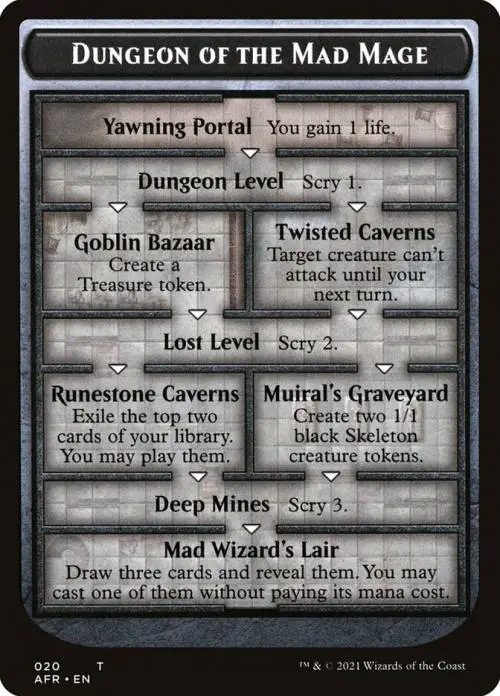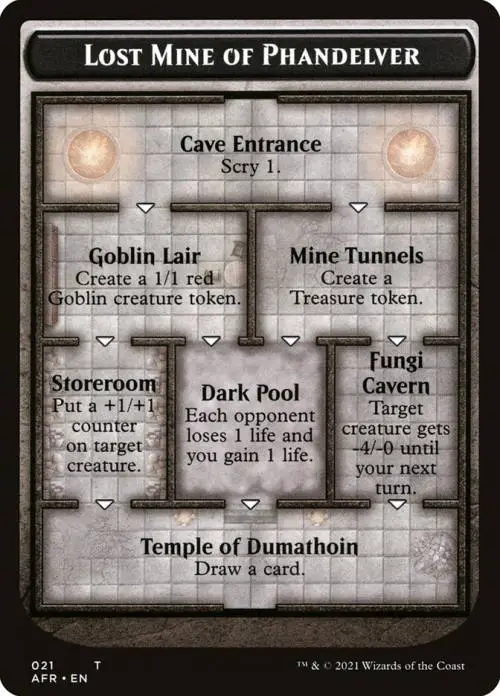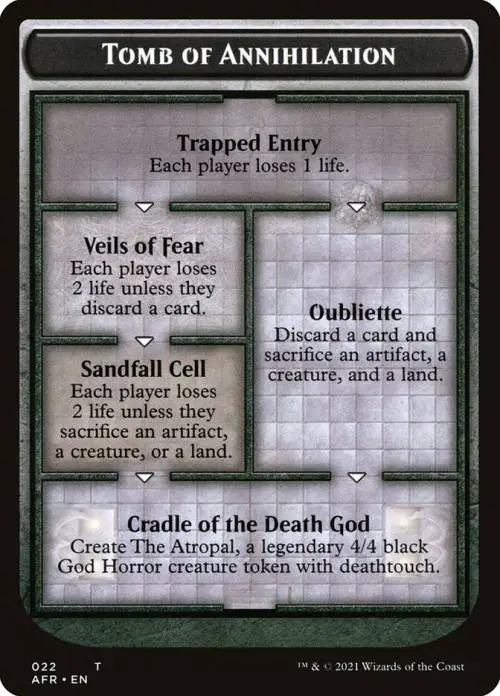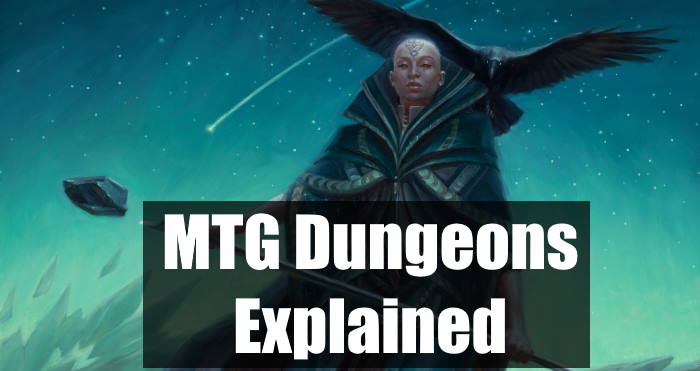The dungeon mechanic is one of the most ambitious in all of Magic: the Gathering. After all, it’s not everyday that we get completely new card types. And now, with the recent release of Commander Legends: Battle for Baldur’s Gate, dungeons are more present than ever.
In this article, I’ll go over everything you need to know about dungeons.
If a player is instructed to “venture into the dungeon” they choose one of the four existing dungeons from outside the game and place that card in the command-zone. Then, the next time they’re instructed to “venture into the dungeon”, the player enters the next room of that dungeon. Each room has an ability that activates when a player enters it.
This mechanic is pretty complex. But not to worry. In this article I’ll break down everything you need to know. Let’s jump right in.
What Are Dungeons?

Dungeon is a card type first introduced in Dungeons & Dragons: Adventures in the Forgotten Realms. Dungeons are non-traditional cards, meaning they don’t have a regular Magic card back. You also don’t put these cards in your deck. Instead, you keep them outside the game until you need them.
In case you didn’t know, this mechanic is completely inspired by the classic tabletop RPG Dungeons & Dragons.
How Do They Work?
Dungeons work a little bit differently depending on the certain cards that interact with them. Cards from D&D: Adventures in the Forgotten Realms function differently than cards from the new Commander Legends set.
With this in mind, I’ll go over both sets separately.
Dungeons & Dragons: Adventures in the Forgotten Realms
Cards from this set instruct the players to “venture in the dungeon”. When this happens, you get to choose one of the three dungeons printed in the set:
Each of these dungeons has their advantages and disadvantages, depending on your goals.
You start in the first room of the dungeon. Then, the next time you’re instructed to “venture in the dungeon”, you advance to the next room. Each time you enter a room, an ability is activated, with the starting rooms usually having smaller rewards and the final room having the biggest payoff.
Commander Legends: Battle for Baldur’s Gate
The new Commander Legends: Battle for Baldur’s Gate set only has one dungeon, The Undercity. The Undercity works in conjunction with the new initiative mechanic.
Instead of saying “venture into the dungeon”, cards in this set grant players “Initiative”.
When you gain Initiative, you enter into the Undercity. And then, at the beginning of every upkeep, if you still have Initiative (it can be taken by other players) you get to enter into the next room.
Rules:
Dungeon: A card type found on nontraditional Magic cards. A dungeon card is not a permanent. See rule 309
Comprehensive Rules
- Dungeons start outside of the game. They do not, however, take up side
board slots. - When you’re instructed to enter a dungeon, you place the dungeon of your choice into the command zone.
- Dungeon cards are not permanents, and they are never cast or included in a deck.
- Each dungeon has a series of rooms connected by arrows. Players navigate through these rooms one level at a time, using a venture marker to mark their place.
All Dungeon Cards




End Step
I have to admit, when I first heard about Dungeons in Magic, I was skeptical. Now that I’ve gotten a chance to play with these cards, however, I think the concept is quite fun! And as a D&D fan, it’s nice to get concepts from that game referenced in Magic.
I hope this article has answered any and all questions you have about dungeons. If not, post a comment below and I’ll be happy to answer it.
